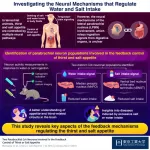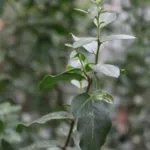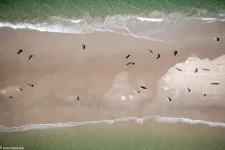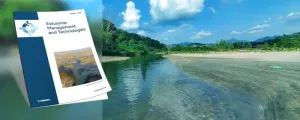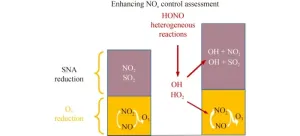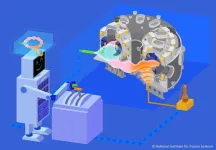(Press-News.org)
Staying hydrated and consuming appropriate amounts of salt is essential for the survival of terrestrial animals, including humans. The human brain has several regions constituting neural circuits that regulate thirst and salt appetite, in intriguing ways.
Previous studies suggested that water or salt ingestion quickly suppresses thirst and salt appetite before the digestive system absorbs the ingested substances, indicating the presence of sensing and feedback mechanisms in digestive organs that help real-time thirst and salt appetite modulation in response to drinking and feeding. Unfortunately, despite extensive research on this subject, the details of these underlying mechanisms remained elusive.
To shed light on this matter, a research team from Japan has recently conducted an in-depth study on the parabrachial nucleus (PBN), the brain’s relay center for ingestion signals coming from digestive organs. Their latest paper, whose first author is Assistant Professor Takashi Matsuda from Tokyo Institute of Technology, was published in Cell Reports on January 23, 2024.
The researchers conducted a series of in vivo experiments using genetically engineered mice. They introduced optogenetic (and chemogenetic) modifications and in vivo calcium imaging techniques into these mice, enabling them to visualize and control the activation or inhibition of specific neurons in the lateral PBN (LPBN) using light (and chemicals). During the experiments, the researchers offered the mice—either in regular or water- or salt-depleted conditions—water and/or salt water, and monitored neural activities along with the corresponding drinking behaviors.
In this way, the team identified two distinct subpopulations of cholecystokinin mRNA-positive neurons in the LPBN, which underwent activation during water and salt intake. The neuronal population that responds to water intake projects from the LPBN to the median preoptic nucleus (MnPO), whereas the one that responds to salt intake projects to the ventral bed nucleus of the stria terminalis (vBNST). Interestingly, if the researchers artificially activated these neuronal populations through optogenetic (genetic control using light) experiments, the mice drank substantially less water and ingested less salt, even if they were previously water- or salt-deprived. Similarly, when the researchers chemically inhibited these neurons, the mice consumed more water and salt than usual.
Therefore, these neuronal populations in the LPBN are involved in feedback mechanisms that reduce thirst and salt appetite upon water or salt ingestion, possibly helping prevent excessive water or salt intake. These results, alongside their previous neurological studies, also reveal that MnPO and vBNST are the control centers for thirst and salt appetite, integrating promotion and suppression signals from several other brain regions. “Understanding brain mechanisms controlling water and salt intake behaviors is not only a significant discovery in the fields of neuroscience and physiology, but also contributes valuable insights to understand the mechanisms underlying diseases induced by excessive water and salt intake, such as water intoxication, polydipsia, and salt-sensitive hypertension,” remarks Dr. Matsuda.
Prof. Noda mentions, “Many neural mechanisms governing fluid homeostasis remain undiscovered. We still need to unravel how the signals for inducing and suppressing water and salt intake, accumulated in the MnPO and vBNST, are integrated and function to control intake behaviors.”
END
Early in the pandemic, clinicians noticed that certain immunocompromised patients were experiencing persistent SARS-CoV-2 infections, some lasting weeks to months at a time.
This raised concerns that one of these cases could be the source of an emerging viral variant that has benefited from an extended battle with the immune system.
A prospective study published in the journal Lancet Microbe provides more clarity on which patient populations are at higher risk for prolonged infections —and hints that this fear is likely unwarranted.
The ...
A new statistical tool developed by researchers at the University of Chicago improves the ability to find genetic variants that cause disease. The tool, described in a new paper published January 26, 2024, in Nature Genetics, combines data from genome wide association studies (GWAS) and predictions of genetic expression to limit the number of false positives and more accurately identify causal genes and variants for a disease.
GWAS is a commonly used approach to try to identify genes associated with a range of human traits, including most common diseases. Researchers compare genome sequences ...
As part of the Ice Memory initiative, PSI researchers, with colleagues from the University of Fribourg and Ca’ Foscari University of Venice as well as the Institute of Polar Sciences of the Italian National Research Council (CNR), analysed ice cores drilled in 2018 and 2020 from the Corbassière glacier at Grand Combin in the canton of Valais. A comparison of the two sets of ice cores published in Nature Geoscience shows: Global warming has made at least this glacier unusable as a climate archive.
Reliable information about the past climate and air pollution can no longer be obtained from ...
A valuable molecule sourced from the soapbark tree and used as a key ingredient in vaccines, has been replicated in an alternative plant host for the first time, opening unprecedented opportunities for the vaccine industry.
A research collaboration led by the John Innes Centre used the recently published genome sequence of the Chilean soapbark tree (Quillaja saponaria) to track down and map the elusive genes and enzymes in the complicated sequence of steps needed to produce the molecule QS-21.
Using transient expression techniques developed at the John Innes Centre, the team reconstituted the ...
As digital devices progressively replace pen and paper, taking notes by hand is becoming increasingly uncommon in schools and universities. Using a keyboard is recommended because it’s often faster than writing by hand. However, the latter has been found to improve spelling accuracy and memory recall.
To find out if the process of forming letters by hand resulted in greater brain connectivity, researchers in Norway now investigated the underlying neural networks involved in both modes of writing.
“We ...
Computers can count seals from aerial photographs with lightning speed and reliability. Based on their spatial patterns, the tiny dots on the aerial images can even be assigned to one of the two major species of seals in the Wadden Sea. That is shown in the thesis that marine biologist Jeroen Hoekendijk will defend on January 26 in Wageningen. "To better understand if and how marine mammals like seals are affected by climate change and the disappearance of sea ice, this help from artificial intelligence (AI) in observations is crucial," Hoekendijk said. Hoekendijk carried out his research at the Royal Netherlands Institute ...
Where freshwater rivers meet seas and oceans lies a scientifically intriguing and ecologically important type of ecosystem. As estuarine ecosystems provide various and diverse services to humanity and the planet at large, including food security and natural buffers and filters in the events of storms and water pollution, there has been an increasing need to facilitate and support the exchange of research findings and ideas related to their conservation and sustainable management by means of new-age technology and novel approaches.
This is how a team of renowned and passionate ...
Sulfate-nitrate-ammonium (SNA) and other atmospheric aerosols play a significant role in influencing both atmospheric and environmental conditions. These aerosols impact climate directly through scattering and absorbing solar radiation, thus influencing the Earth's radiative balance. The presence of high concentrations of aerosols can lead to the formation of haze and reduce air quality, affecting human health and transportation. Furthermore, the fine particulate matter (PM2.5 and PM10) within aerosols poses health risks ...
“From nature to nature” is the major goal of landscape design. The former is the idea of nature, i.e., landscape architects regard nature as the archetype of design; the latter is the experience of nature, i.e., landscape architects hope people can perceive the natural atmosphere through designed landscape. In this sense, the transformation from idea to experience of nature refers to the process of landscape design, which materializes landscape. According to this, this article focuses on the following topics: 1) what role does nature play as the origin of the landscape design theory; 2) how does nature as an idea promote ...
Fusion energy is being developed as a solution to global energy problems. In particular, the magnetic confinement method, in which ultra-high temperature plasma is confined by a magnetic field, is the most advanced and is considered to be the most promising method for fusion reactors. By this method, the plasma is confined in the reactor in a high-temperature, high-density state by a magnetic field, and the energy released by the fusion reaction in the plasma is converted into electricity. To realize this power generation method, it is essential to predict and control the complex behavior of fusion plasma. One possible control method is digital twin control, in which the fusion plasma ...
